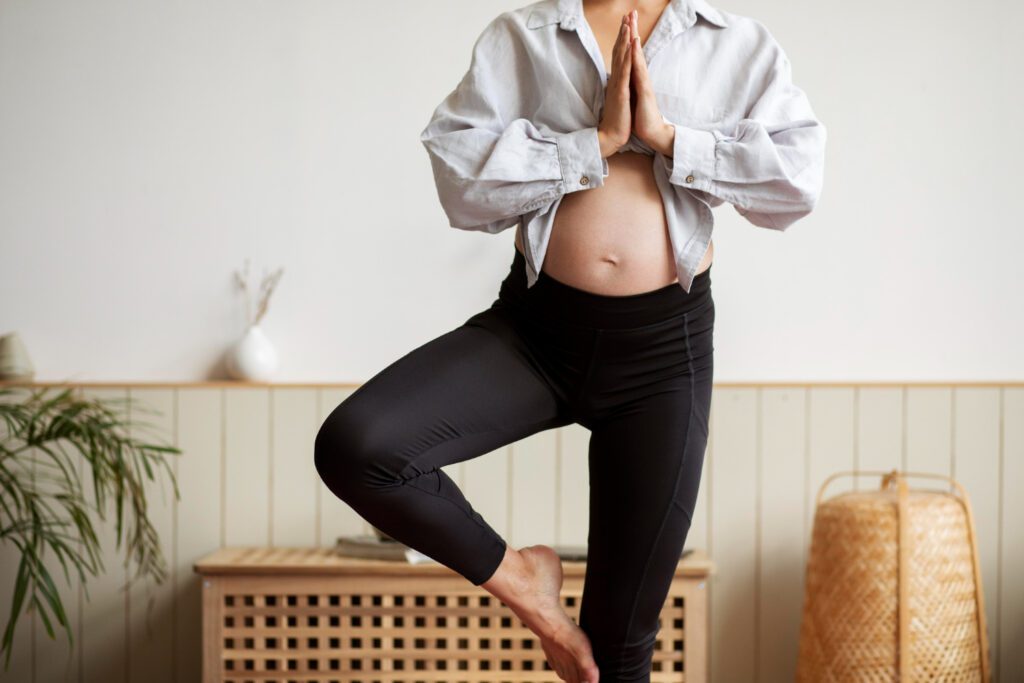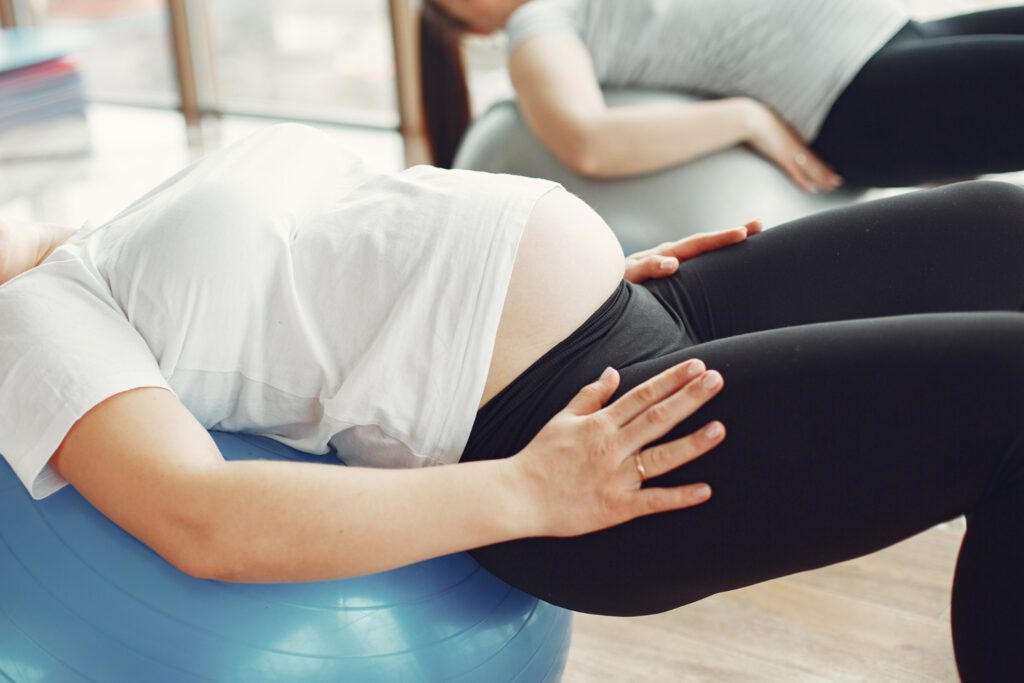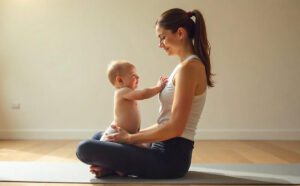The hips are a symbol of fertility and femininity, so in this beautiful stage of pregnancy it is time to take care of them and give them mobility. Today from mamayoga We explain 5 yoga postures to improve hip mobility.
The joint that gives rise to hip mobility
We speak of the hip or coxofemoral joint as the insertion between the femur and the pelvis. This joint is one of the most mobile in your body due to its spherical shape, having the movements of: flexion, extension, abduction, adduction, external rotation, internal rotation and circumduction. Furthermore, due to its position, it is a very stable joint with strong ligaments as it supports the weight of the upper part of the body.
During your pregnancy your body generates the hormone relaxin, which softens these hip ligaments to prepare for childbirth. This can cause discomfort throughout the pelvic girdle: pain, pulling, cramps, etc.
We can see the pelvis as a bowl that picks up and holds the baby to the baby and the hip joint gives mobility to that bowl. Thus, good hip mobility, added to moderate physical activity and adequate rest, will help you relieve these symptoms.
The queen of movement
The natural movements of your hips, the circles, the turns, the dances will accompany you during childbirth. Your wise body will move and sway to accompany the arrival of contractions and also of the baby, the baby. Good hip mobility will allow you to flow better in the madness that is going to be your Birth.
Thanks to yoga and its practice you will be able to know your body better, hip mobility postures will help you open new spaces, decompress the joint and release rigidities. Trust your body, listen to it and enjoy your pregnancy and childbirth.
Yoga poses to improve hip mobility
Malasana or upavesasana: The wreath
We start with a classic of the postures of yoga for pregnancy. The garland pose. This position will help you open the hip by abduction and flexion of the joint, and it is also one of the vertical birth positions.
To do it, you squat with your knees open and your feet following the line marked by your knees. The elbows gently push the knees outward with the hands in namaste in your heart, as your spine rises to give you room to breathe calmly.
Attention, this position is not recommended if you have placenta previa, hemorrhoids or if your baby is breech (and you want him to turn) since by opening the hip space the baby will lower further and could put pressure on the placenta, increasing your hemorrhoids. or fit completely on your buttocks without being able to turn around.
Chakravakasana: the cat-cow
Starting from In the quadruped position you can perform all the movements that will give mobility to your hip, pelvis, lumbar area, etc. It is a basic position for mobility during childbirth, it improves pain perception, gives you pelvic freedom and helps you find points of support and strength in your body. As you might imagine, it is also a birthing position.
You stand on your hands, knees and tips of your toes. Here I invite you to experience all the mobility of your hip: flex and extend, lengthening the spine when inhaling and picking up the baby when exhaling; do circles with one knee raised in both directions of rotation to feel the internal and external rotation; Support your feet and slightly raise your knees, opening and closing them in abduction and adduction; or simply do all the possible movements freely, stretching your body as if you were a bear that has just come out of the cave.
Godhapitham: The iguana or the dove
Magical posture to relieve sciatica, the pigeon will help you with external rotation movements, flexion in one leg and extension in the other. In addition, it is a good posture to relieve tension in the pelvic floor.
From the cat, advance the left knee towards the hands and form a right angle with the leg resting on the floor. Place your forearms on the floor and your hands on top of each other in the shape of fists so that you can rest your head on it, bending your entire trunk forward on top of your front leg (at an angle to have room for the baby).
Do it again with the other leg.
Upavista konasana: the turtle
The turtle is a posture of more intense pelvic opening and hip abduction combined with intense spinal flexion, but it is safe in cases where it cannot be practiced. upavesasana.
Sitting on the floor with your legs open, look for maximum openness, tips of your toes towards the ceiling, long back. Place your fingertips on the floor in front of you. When you inhale, lengthen your spine upwards, when you exhale, pull with your fingers to flex your body forward and fold towards the floor between your legs.

Vkrasana: the tree
The tree in balance is the last of the recommendations today. In addition to external hip rotation to different degrees depending on the position of your leg, balance will promote the strength of the entire muscular structure that accompanies your hip: glutes, pelvic floor, abdominal girdle, etc. In this way, hip mobility will be supported by healthy and present muscles to avoid discomfort of all kinds.
Create a firm base on your left foot, feel the big toe, heel and the outside of the sole forming a magic triangle attached to the ground. Raise your right leg by bending the knee and rest your foot on your left leg, depending on your flexibility, it will be on the calf, thigh or even as high as you can with the heel against the pelvic floor. Press foot against leg and leg against foot so that the posture supports itself. Raise your arms above your head when you inhale and when you exhale you carry them in namaste in front of the heart. Do it again with the other leg.
All I have left to do is invite you to enjoy this moment and state of your body. We would love to accompany you in your yoga practices during your pregnancy to give more mobility and freedom to your hips and your entire body.
Silvia Gallego
Author and editor, prenatal yoga teacher




